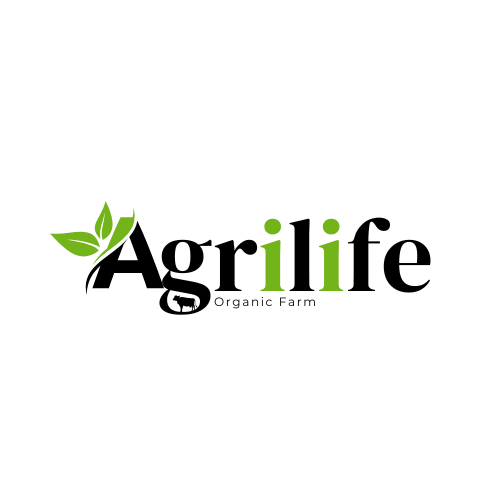
Integrating dairy with vegetable farming is a good and creative approach for a sustainable agriculture system. This system takes advantage of the relationship between livestock and crop cultivation by optimizing the use of resources and waste management. This approach helps farmers to increase the yields, improve soil health and enhance the healthy agricultural ecosystem. This blog explores the strategies, benefits and challenges of successfully integrating dairy and vegetable farming.
Understanding Integrated Dairy and Vegetable Farming System
In integrated farming several farming activities are managed simultaneously to complement each other. In a dairy vegetable farming system, the dairy cows provide milk and manure. The vegetable crops benefit from the organic matter and nutrients in the manure. On the contrary the vegetable crops provide continuous and capable income. The mutual interaction between these creates a sustainable life cycle and reduces need for external inputs.
Planning for Integration
A proper planning is important before implementing such an integration system.
1. Land Assessment
Before every agriculture cultivation a better understanding and measurement of the land and soil is important. Assessing the land size, topography and soil quality water availability will help proper cultivation. Also consider factors such as drainage, availability of sunlight and proximity of water source.
2. Selection of Crop
Choose crops suitable for growing in the local climate, soil type and nearby market needs. Tomatoes, ladies finger, pumpkin and leafy greens are common choices. Crop rotation should be considered in order to increase soil fertility and prevent pests.
3. Livestock Management
Choose good dairy breeds and ensure that they can survive in the local climate. Provide safe and clean shelter and grazing land for them. Grazing land is important for their health and milk production.
4. Proper Integration Plan
In the Integrating farming system the land should be separated for cows grazing and for vegetable cultivation. Also make easy storage and access of cow manure for crops.
Basic Integration Practices
1. Proper use of Manure
Dairy farms produce a large amount of manure that contains many components. These organic compounds can act as natural fertilizers for vegetables.
How to maximize the benefits:
- Manure should be composted to stabilize the nutrients and reduce pathogens.
- Compost the manure or incorporate it into soil before planting.
- For keeping the soil’s nutrient balance, apply the manure in a controlled amount.
2. Crop Rotation and Intercropping
Cultivate alternative crops to stop pest cycle and prevent nutrient degradation. Combining vegetables with sesame crops or forage crops like alfalfa benefits livestock and reduces soil erosion.
3. Water Usage
Make water usage more efficient by installing an irrigation system that serves both pastures and farms. Practices such as rainwater harvesting and drip irrigation can improve efficiency.
4. Pest Control
Integrated Pest Management strategies such as introduction to natural predators and planting of insecticidal crops reduce the use of chemicals and protect both milk and vegetables in the farming system.
Benefits of Integrated Dairy Farming and Vegetable Farming
1. Increased Soil Fertility
Regular application of cow’s organic manure improves soil fertility, increases microbial activity, and nutrient uptake. This will help to achieve higher yield.
2. Reduced Cost
Using manure as fertilizer reduces the cost of chemical fertilizers and raw materials, and lowers the production cost. And cultivating cattle feeding grass crops also helps to lower the feeding cost.
3. Waste Reduction
Recycling waste from dairy farms is used as vegetable production, ensuring that nothing goes unused. It helps environmental sustainability.
4. Types of Income
Combining dairy production with vegetable sales can generate more revenue, reducing the economic risk associated with market fluctuations.
5. Improved Flexibility
Integrated systems are more resilient to climate change, as diverse activities spread the risk.
Challenges in Integrated Farming
While the benefits are many, integrated farming also presents challenges:
1. Initial Investment
Establishing an integrated system requires initial investments in infrastructure such as compost bins, fences, irrigation system and source, cattle shelters, seeds and other necessary equipment.
2. Labour Requirement
Managing both dairy farms and vegetable farms is a crucial task. An efficient and skilled labour is required for integrated farming.
3. Management of Nutrition
Over use of manure can lead to nutrient imbalance in soil and this leads to contamination of water sources. So the farmer should properly manage the nutrient level in the soil.
4. Pests and Disease Management
Diseases of animals and crops can spread throughout the system, so the farmers should be vigilant and take necessary control measures.
Case study : A Successful Story
A farmer in India Combined dairy farming with vegetable production with 3 acres of land. By allocating 1 acre of land for pasture and 2 acres of land for vegetable crops, the farmer used the cow dung to enrich the soil resulting in a 30% increase in vegetable production. The vegetables provide a year round income while the milk provides daily income. The benefits of the system enabled the farmer to invest in a better irrigation system and increase production. Are you interested in integrated diary and vegetable farming, then visit AgriiLife farm.
What Might Happen In The Future
Integrated agriculture is in line with global sustainability goals and is concerned with food security and environmental protection. Technological advances such as automated irrigation systems and nutrient sensors will further enable farmers to optimize these systems. Governments and Non Government Organizations promote integrated agriculture through grants, training and research programs.
Conclusion
Integrating dairy farming with vegetable farming on the same land is a comprehensive approach for a sustainable agricultural system. By using this natural interaction between animals and crops, farmers can maximize crop yields, reduce environmental impact, and increase economic stability. Integrated organic farming requires proper planning and resource allocation and monitoring, but its long term return makes it a worthwhile investment for farmers seeking a sustainable future.
To know more about integrated farming methods visit AgriiLife Farm or call to 8086172858

